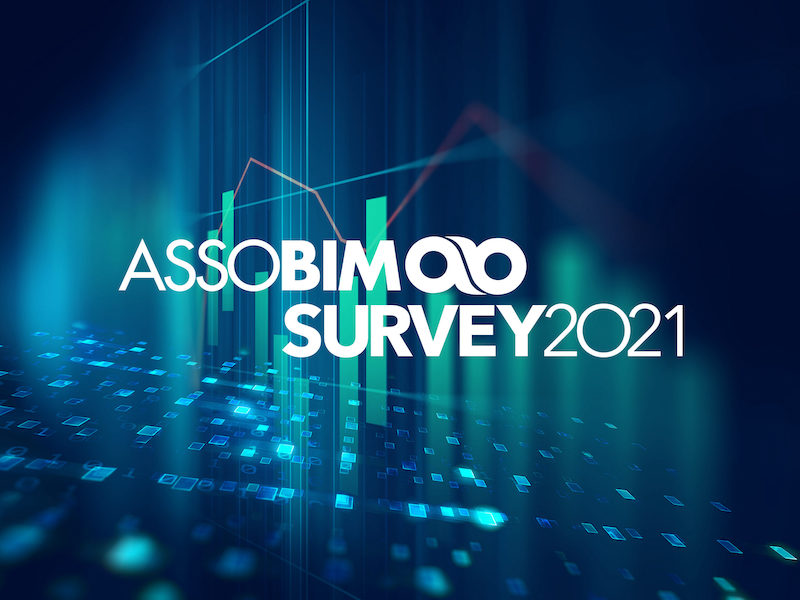How is it going with BIM development? Tell ASSOBIM
ASSOBIM every year photographs the development of the BIM supply chain in Italian construction

ASSOBIM is the association that defines itself as the common home for Building Information Modeling and every year offers professionals and companies a survey on the use of BIM.
Established with the aim of promoting BIM and digitization in the construction supply chain, ASSOBIM has been carrying out for some years a survey aimed at all actors in the construction industry with the aim of photographing the Italian situation regarding the development of the BIM methodology.
The questionnaire, free and anonymous, is aimed at construction companies, design firms and companies, real estate agencies, maintenance companies, public administrations and entities, manufacturers of building materials and components, universities and research centers, IT, software and BIM consulting and services.
To take part in the survey, all you need to do is fill in the online questionnaire. In this way, its contribution will be made to the next edition of the BIM Report 2021, which aims to trace the development of BIM in Italy over the last year and the perception that sector operators have regarding its strategic importance.
From the project to the digitization of the construction site, up to the management of the entire life cycle of the building, BIM invests the entire sector of the construction industry with wide repercussions in terms of coordination, transparency, certainty of times, costs and methods of execution, as well as defined responsibilities and certifications. On the other hand, the new procurement code is also leading to a progressive obligation to use BIM processes, so sooner or later, by hook or by crook, this must be tackled more or less by all the professions that revolve around the world of construction and infrastructure. It is necessary to understand at what point our country is and ASSOBIM tries to do it by proceeding from the inside, that is by going to ask whoever belongs to this world.
What does the ASSOBIM questionnaire contain? How to get an idea of the questions and the outcomes they lead to.
To better understand what it is, one can start from the fact that ASSOBIM supports the digitization of construction through BIM, OpenBIM and interdisciplinary collaboration in design, management of the entire life cycle of the built work, therefore also the questionnaire is a tool for promoting and raising awareness of these issues.
But perhaps the simplest thing is to take a look at the results, namely the BIM Report 2020, that of last year, available in the download section of assobim.it along with some e-books and other interesting materials for free download.
Leafing through the BIM Report 2020 it is clear that the category most interested in BIM are design studios, which alone represent over 50% of the sample, while maintenance companies and private clients are almost absent. Steps for the latter, but facility management would have a lot to gain from BIM.
Almost everyone is of the opinion that BIM will help reduce variations in the pipeline by solving design flaws, but the largest part of the sample declares not to use it, however the percentage of BIM users is growing compared to the previous year (+ 6.7%).
For many, 2019 seems to have been the turning point in the choice to implement BIM in the company, in this it seems that the 2017 BIM Decree has had a fair weight and also the percentage of those who do not use it yet used in the his projects. Architecture is the sector in which BIM is most successful, more than in structures, plants, infrastructures, recovery and energy put together. However, the front of those who plan to adopt BIM in the next 1-5 years continues to grow, as well as those who evaluate the use of BIM in the projects faced in the last year as advantageous in terms of time / cost reduction.
On the other hand, the panorama of information sources on BIM is fragmented, with a low contribution from orders, institutions and universities, while most rely on “do it yourself” between websites, sector media, colleagues and consultants. A diversification which, on the one hand, confirms the topicality of the topic, but on the other depicts a certain lack of precise and shared points of reference.
More details follow, developed in 24 tables relating to the questions in the questionnaire, enriched by the initial presentation of the project and the data collected. The ASSOBIM BIM Report therefore represents an interesting cross-section of a sector in turmoil, which is worth taking into consideration and to which you can provide your contribution by answering the ASSOBIM 2021 questionnaire.



































































